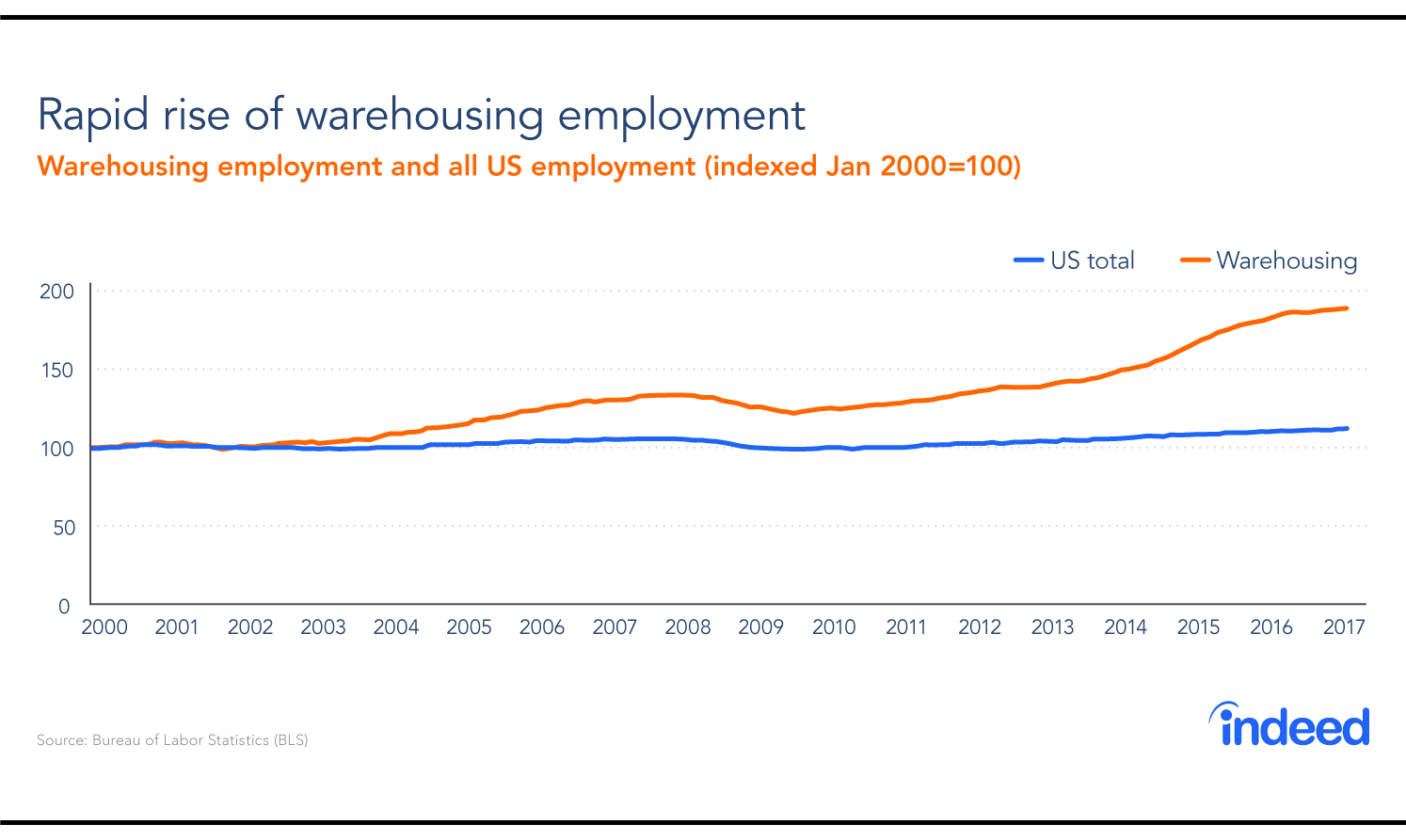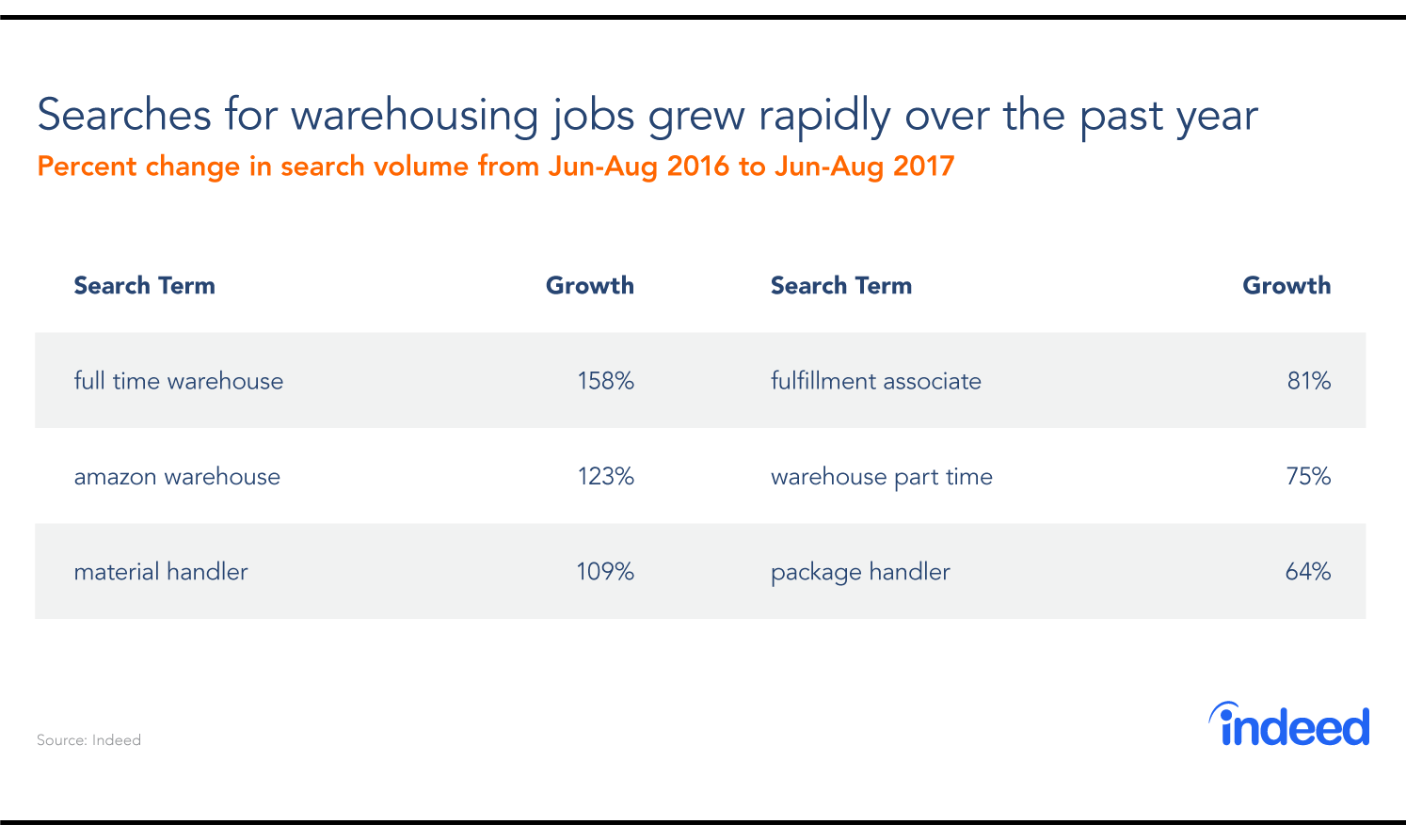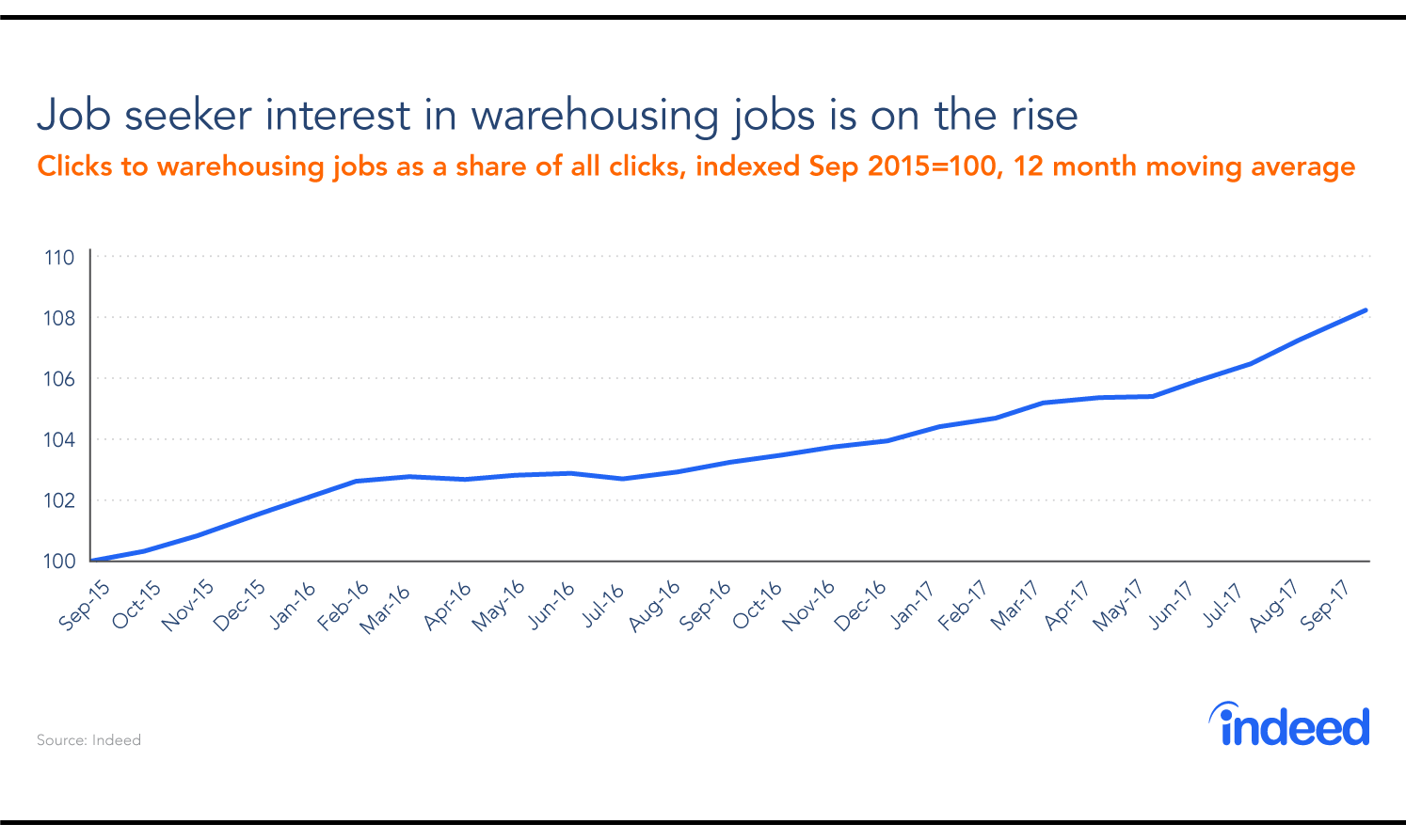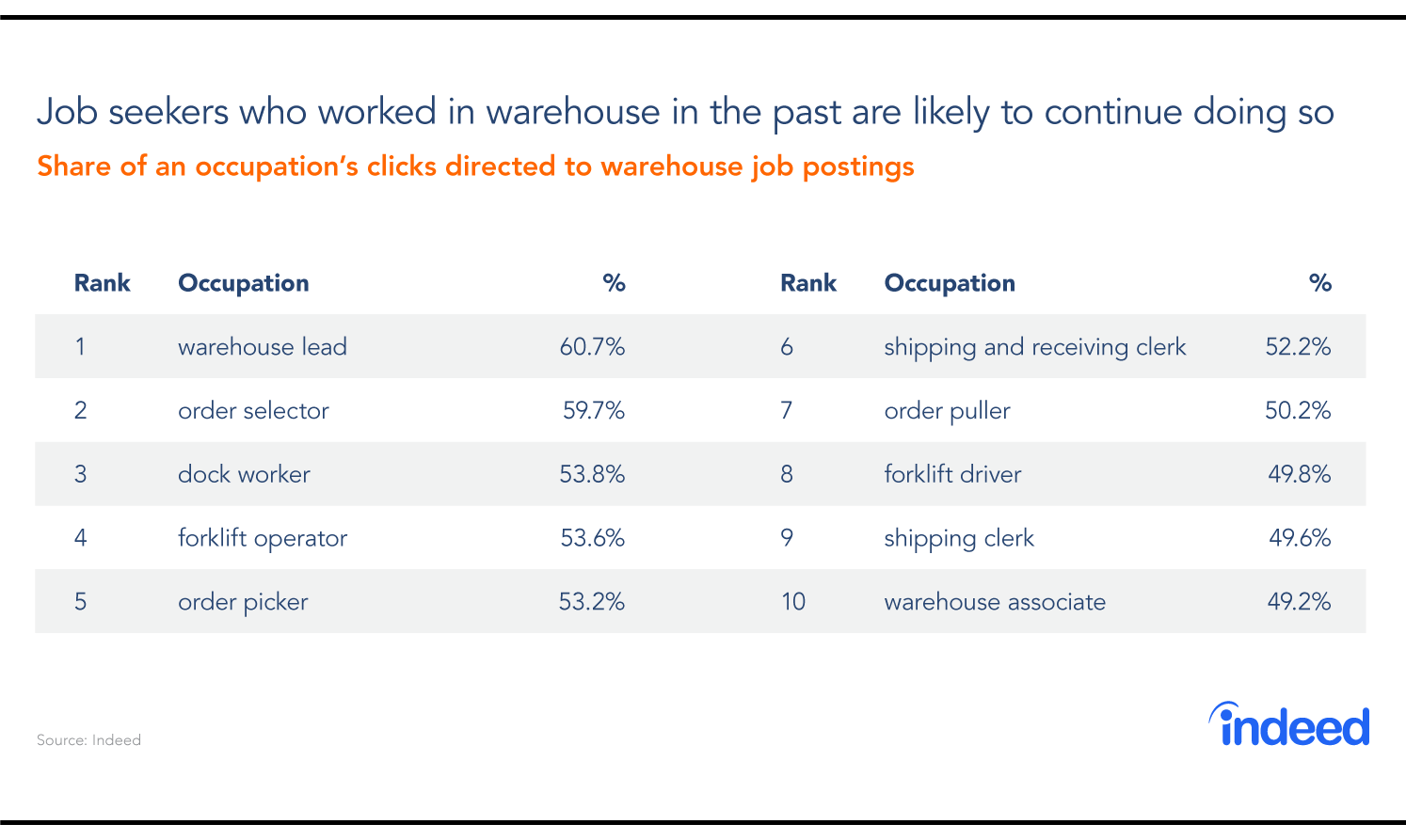By Andrew Flowers and Valerie Rodden
The growth in ecommerce has been a boon for warehousing jobs. Over the past year, employment in these facilities has grown at double the pace of average US job growth and doesn’t show any signs of letting up. As Americans are finishing—or maybe just starting—their holiday shopping, we thought it appropriate to shine a spotlight on this booming industry. Indeed job search data makes it clear just how fast interest in warehousing jobs is growing—and who’s interested in these opportunities.
Here are some key takeaways:
- The share of job seeker interest in warehouse positions has grown 8% in the past two years.
- GenXers express the most interest in these jobs, while millennials show the least.
- More than half of the interest from job seekers currently in a select set of warehouse positions is directed to other warehouse jobs.
Warehousing employment has risen 90% since 2000, according to the Bureau of Labor Statistics (BLS), dwarfing average employment growth of 12% over the same time period.

The BLS projects that, over the next 10 years, warehousing and storage employment will grow by 195,700, which would put the field in the 95th percentile of employment gains among 335 industries. With such a strong growth trajectory, warehousing is an industry to watch.
Job seekers are increasingly interested in warehousing jobs

To get a comprehensive look at job seeker interest, we investigated clicks on all warehousing job postings over the past two years.

The share of job seeker interest in warehousing job postings has jumped more than 8% over the past two years. Warehousing interest has been growing consistently over this entire period, but has accelerated in the past six months.
The average warehouse employee makes $19.60 an hour and works 42 hours a week. While these wages are lower than the US average of $26.49, the hours worked are much higher than the average of 34.8 hours. On a weekly basis, warehouse workers make about 10% less than the average US worker, but nearly 50% more than the average retail worker.
Warehouse positions attract older, more specialized job seekers
Indeed research has shown that millennials are far less drawn to routine manual labor than other generations. Maybe it’s that physically demanding jobs are unattractive to them or perhaps millennials believe they don’t pay well. For warehousing jobs in particular, millennials are 15% less likely than Generation X and 8% less than Baby Boomers to show interest. Instead, they’re attracted to more varied and creative occupations in fields such as healthcare, science and food prep.
Using the most recent job title on a resume, we can also categorize job seekers according to occupation, revealing job transition trends. The table below shows the 10 occupations that have the largest share of interest in warehouse job postings. All 10 are common in warehousing, suggesting that many workers now in the industry want to stay in it.

Job seekers whose most recent occupation was warehouse lead are directing nearly 61% of their clicks to warehouse job postings. In fact, all 10 occupations with the highest share of clicks on warehousing jobs are devoting nearly half or more of their search activity to the industry.
While it’s not surprising that workers like order selectors or forklift drivers are looking for warehouse positions, it is unusual to find such heavy concentrations of interest in one industry. For example, we estimate that 17% of forklift operator job postings are in the warehousing industry, yet nearly 54% of clicks from forklift operators are on warehousing job postings. For forklift drivers and other job seekers with similar skill sets, warehousing probably provides better pay and benefits than other industries and thus attracts an outsized share of their interest.
Of course, workers with experience in the industry aren’t the only ones looking for warehouse occupations. For example, 30% of clicks by lawn care specialists and car detailers go to warehouse positions. Security guards, drivers and restaurant workers also direct a large share of search activity to warehousing.
One interesting fact: One might expect that workers in the hard-pressed brick-and-mortar retail industry would be clamoring for warehouse jobs, but so far that’s not the case. Indeed research on the retail industry found that, as the brick-and-mortar retail employment has waned, its workers haven’t shown particular interest in warehousing jobs.
That may change though. With warehouse employment expected to grow 21% in the next 10 years, there’s plenty of room for people to make the leap into this transformational industry.






